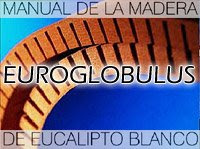Karri Knight, Grandpa & other Giant Eucalyptus in the Iberian Peninsula
Gustavo Iglesias Trabado
GIT Forestry Consulting - Consultoría y Servicios de Ingeniería Agroforestal - www.git-forestry.com - EUCALYPTOLOGICS
Gustavo Iglesias Trabado

GIT Forestry Consulting - Consultoría y Servicios de Ingeniería Agroforestal - www.git-forestry.com - EUCALYPTOLOGICS
By 1866 in the neighbourhood of Coimbra (Portugal) the first cultivated forests of Eucalyptus in Iberia were established with the planting of thirty five thousand trees besides the Mondego river and at Mata de Choupal. It was an attempt to tame the stream and control devastating soil erosion caused by floods. Until then, the Australian trees were botanical rarities and relatively uncommon even as ornamental plants in public and private gardens. It was also a long time before they became a paramount timber crop for Northwestern Iberia, but this protective afforestation can be considered the beginning of such an era.
 Fig 1: The giant Grandfather of Chavín (Eucalyptus globulus, Spain) and Karri Knight of Vale de Canas (Eucalyptus diversicolor, Portugal), examples of monumental Eucalyptus trees in Europe
Fig 1: The giant Grandfather of Chavín (Eucalyptus globulus, Spain) and Karri Knight of Vale de Canas (Eucalyptus diversicolor, Portugal), examples of monumental Eucalyptus trees in EuropeIn the neighbourhood of Coimbra stands today an eucalypt tree that witnessed those times and that has grown straight and tall from the bottom of a foggy deep gorge in search of light to become the tallest Eucalyptus in Europe. It is the Karri Knight, an Eucalyptus diversicolor from Western Australia.
Four hundred kilometers to the North and twentyfive years later, a small valley in the Northern Coast of Galicia (NW Spain) was subject to works of hydraulic engineering. Its steep slopes and narrow bottom made it suitable for the taming of a rivulet in the Landro-Loureiro basin, which was dammed. Soon a primitive electricity generation plant ("fábrica da luz") brought light to the nights of the foggy coast. A network of channels to divert excess water flow was also built in order to avoid catastrophic floods to the rich agricultural fields down the stream. And here, by the 1890's, the first Eucalyptus were planted in order to, as also happened near Coimbra, stabilize soils.
 Fig 2: Natural Monument Eucalyptus globulus grove at Souto da Retorta (Chavín, Viveiro, Lugo, Galicia, Spain)
Fig 2: Natural Monument Eucalyptus globulus grove at Souto da Retorta (Chavín, Viveiro, Lugo, Galicia, Spain)More than a century later, the six hundred 95 to 115 years old Eucalyptus globulus of Chavín grow towering above the steep slopes, their roots drinking directly from channels and rivulet, to become the tallest Eucalyptus grove in Europe. The living Natural Monument at Souto da Retorta is one of the Cathedrals of the Cantabrian Coast, its pillars made of Tasmanian Blue Gums. Sheltered by the giants, a rich understorey of chestnuts, oaks, laurels and ferns grows happily in an unique microclimate.
Several of these trees are special. But tradition marks one of them, O Avó de Chavín (The Grandfather) as the main shrine of this magical place. Towering at 67 meters above that forest floor and with a perimeter at the base of more than 10 meters, Grandpa receives the hugs of countless visitors. In groups of seven!
Several of these trees are special. But tradition marks one of them, O Avó de Chavín (The Grandfather) as the main shrine of this magical place. Towering at 67 meters above that forest floor and with a perimeter at the base of more than 10 meters, Grandpa receives the hugs of countless visitors. In groups of seven!
More than a century later, coastal cultivated and feral forests of Tasmanian Blue Gum dominate the non agricultural landscape of the foggy and narrow "Eucalyptus timberbelt", stretching for miles of intricate ranges near the seashore. Among them, other Eucalyptus Giants. Considering several dimensions!


If anytime you think a visit is worthwhile, and you need a guide talking endlessly on these types of trees, do not hesitate contacting us!

Have you seen the Giant Eucalyptus Movie?
 Subscribe to receive EUCALYPTOLOGICS via e-mail
Subscribe to receive EUCALYPTOLOGICS via e-mail
Interesting links

So what if you received an unexpected call asking you to join a Giant Tree Trek visiting what probably are the tallest trees in Europe... and you said "Yes, Sir (of course!!!)"?
- Cold hardy Eucalyptus timber production in Galicia (I)
- Eucalyptus Highland Forests in Northwestern Spain and Portugal (II)
- Eucalyptus globulus. Blue Gum Eucalypt Coastal Forests in Northwestern Iberia
- Eucalyptus nitens. Shining Gum Eucalypt Highland Forests in Northwestern Iberia
- Eucalyptus macarthurii. Camden Woollybutt Highland Forests in Northwestern Iberia
- Eucalyptus delegatensis. Tasmanian Oak Highland Forests in Northwestern Iberia
- Eucalyptus dalrympleana. Mountain White Gum Highland Forests in Northwestern Iberia
Have you seen the Giant Eucalyptus Movie?
![]() Subscribe to receive EUCALYPTOLOGICS via RSS
Subscribe to receive EUCALYPTOLOGICS via RSS
 Subscribe to receive EUCALYPTOLOGICS via e-mail
Subscribe to receive EUCALYPTOLOGICS via e-mail© 2007-2011 Gustavo Iglesias Trabado. Please contact us if you want to use all or part of this text and photography elsewhere. We like to share, but we do not like rudeness.



































![Validate my Atom 1.0 feed [Valid Atom 1.0]](http://gus.iglesias.googlepages.com/valid-atom.png)


















5 Comments by our readers :::
Hi Gus. Looks great - both the Eucs and the blog. We look forward to more updates in the future
Graham & Heather Milligan, southern New Zealand
That 35,000 planted Eucalyptus mentioned in the opening paragraphs is quite the legions of plant material.
There must have been a good organization of seed transportation and small nursery. Would they have planted the seeds in the ground near the river?
Cheers ~ Mario Vaden / Oregon
Interesting thoughts Mario!
Today, nursery operations for similar amounts of eucalypts are very simple. With a minimum of machinery, nurseries can produce millions of plants per year. But surely it was not like that back in 1866.
About seed origin, a quite likely case is that it was sourced locally. E. globulus is known in cultivation in Portugal since 1829. But there are other possibilities, since Portuguese ports, in the route to and from Australia, were very friendly to British ships for many years. Also by then, French seed dealers were already distributing eucalypt seed worldwide, either received from Australia, or grown locally in Southern France. And there is a Botanical Garden at Coimbra since 1772, with trained botanists since 1804, always keen to try new plants from new worlds.
About the horticultural part of necessary nursery work for such planting, big gaps on the details of who, where and how. But the "river taming" hydraulic engineering process at River Mondego started 70 years before any eucalypt was planted, directed by a Jesuit "Friar-Engineer". Poplars were used first, and many other trees, including eucalypts, later.
With engineers, botanists, master gardeners, tree collectors and an important pottery industry in the same area by 1866, it is my perception that things were well organized, rare and valuable seeds arriving from distant countries were saved as much as possible (so not seed planting, except for what was very common) and plants raised from seed, in clay pots.
But it is all speculative, of course, even if the pieces of the puzzle seem to fit :-)
Hi! How have the heights of the Grandfather and the Karri Knight been measured? What kind of equipment and method?
Hello Kouta :-)
Glad to read you.
In older days, using diverse optical survey tools, different sorts of clinometers, and applying trigonometric methods for calculation.
In more modern days, using more advanced hypsometers, taking advantage of laser rangefinders + inclinometers which operate more "automagically" based on the same mathematical principles.
In any case, not easy to measure these giant beings accurately even using such machines. Good visuals are essential, and that is difficult in both tree groves, because of obstacles (other trees) or difficulty in identifying the tree tops.
Send a comment to EUCALYPTOLOGICS